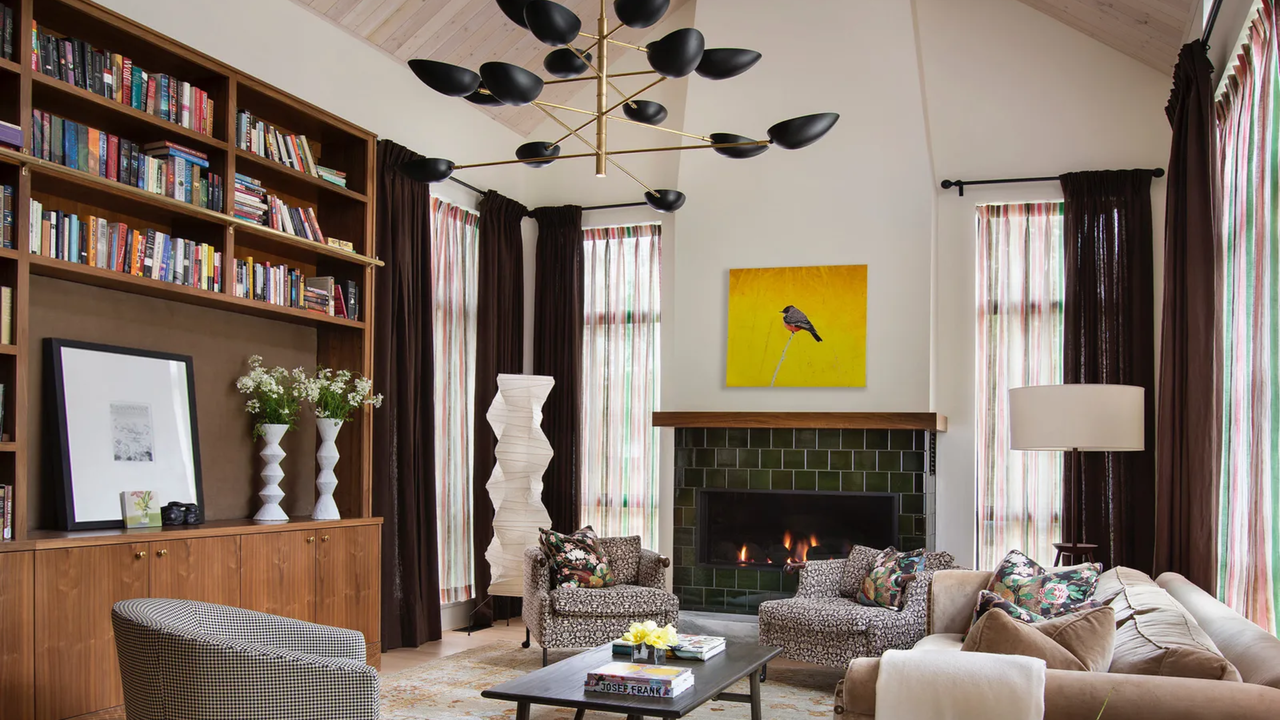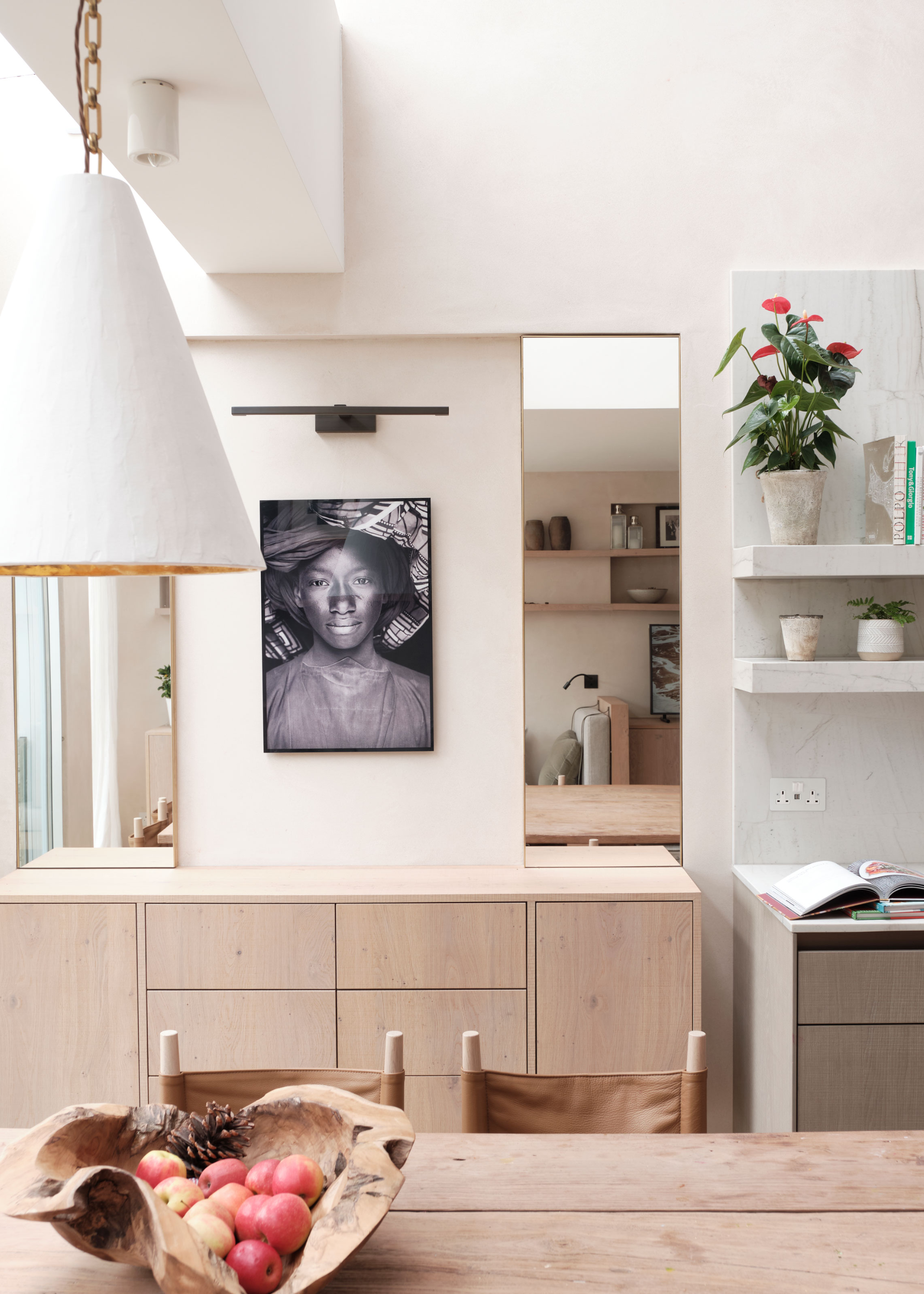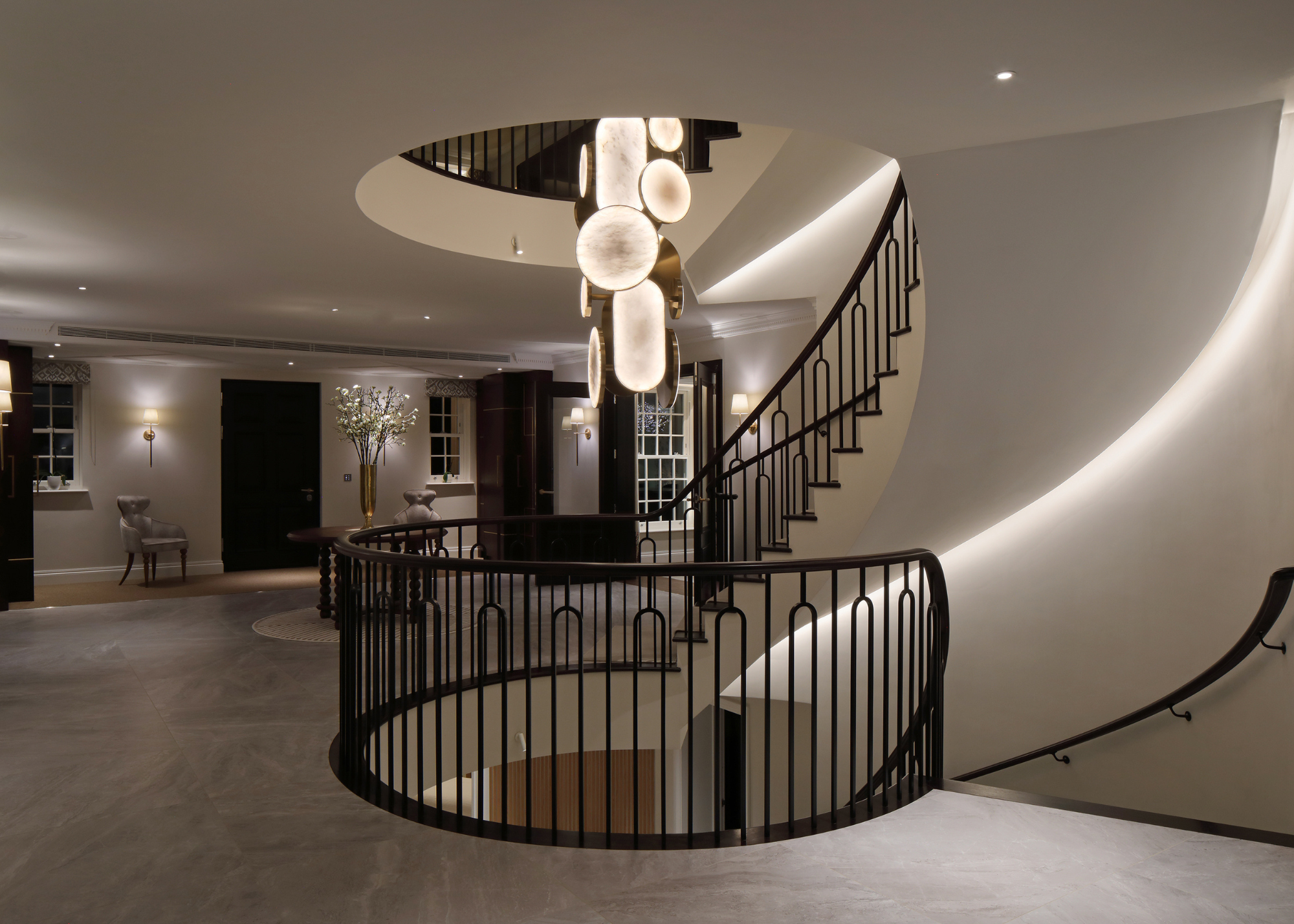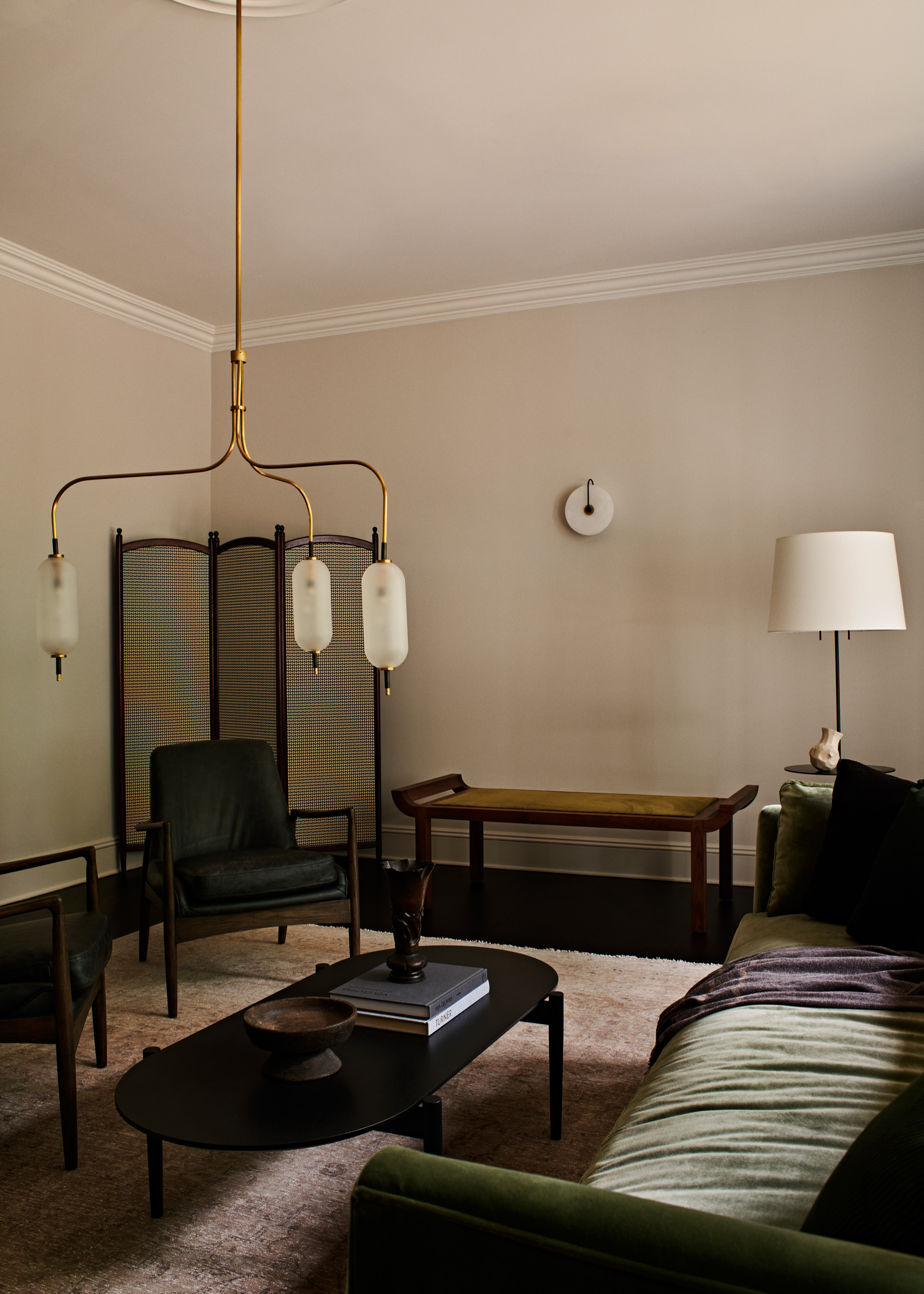
It's all too easy to underestimate the power of good lighting. That is, until you see a picture of yourself under the harsh glare of heavy overhead downlighting, then, suddenly, we're all experts in the necessity of soft, flattering lighting.
But knowing how to plan your home lighting scheme is not just about the pursuit of a good selfie. As Jo Mann, from Light House Designs, explains, "Lighting is an integral part of how we experience a space. It defines the atmosphere as much as the materials or furniture do. The right lighting can make a room feel calm and inviting, while the wrong approach can leave it cold and uncomfortable."
Bad lighting often feels a bit like one of those 'I know it when I see it' situations; it can be hard to define the line between harsh, unflattering lighting and cozy, inviting lighting schemes. But luckily, we've got the experts to lay that line out for us. They've told me the top 5 worst offenders for an unflattering lighting scheme, as well as the techniques they recommend using instead.
1. Fixed Downlights

When you think of unflattering lighting, harsh, overhead lights are most likely the first thing that comes to mind, and for good reason, too.
As Jo explains, "Fixed fittings can cast harsh shadows and create glare on faces and surfaces."
This can be somewhat remedied by bringing in tiltable, or adjustable lights, but, as Jo says, "When the light can’t be directed, it often produces strong contrast that flattens a room’s atmosphere."
This harsh, flattening effect can essentially ruin all the hard work you've done on your interior design, so it's fair to say this is a design we should be leaving in the past, and search for some overhead light alternatives, instead.
Not only is this light fitting completely adjustable and tiltable, so you can have full control over the light source, but it also creates a seamless look thanks to its trimless, plaster-in design.
Another completely adjustable and tiltable option, these recessed LED downlights pack double the punch with their dual bulb design, without ever looking too harsh.
2. Cove Lighting

There's always a temptation when something looks good to just use it absolutely everywhere and anywhere, but when taken out of the necessary context, these much-loved techniques may not, ahem, shine in quite the same way.
This is exactly the circumstance with cove lighting, says Daniel Blaker, creative director of Nulty Lighting. He says, "An illuminated cove can be a thing of real beauty. It’s an enduring technique for a reason because when you discreetly conceal the light source, the emphasis is on the illuminated surface rather than a distracting fitting. However, cove lighting has become slightly ubiquitous and in many interior schemes, we’re seeing cove lighting installed on every elevation, which can cheapen the effect."
Once an interior design technique is taken out of its intended context and begins to get used without any real consideration or meaning, that same technique you once loved begins to lose all its appeal.
Daniel similarly points to coffer ceiling lighting, for many of the same reasons. "In some cases, the effect of coffer illumination shining up onto the ceiling surface highlights it in an unflattering way," Daniel says. "It is all too easy to get it wrong. The design aspiration is right, but we see common mistakes such as badly positioned light sources, hot spots, or shadows."
3. Overload Lighting

"Over-lighting is one of the most common mistakes when planning your lighting, and one to avoid," says Daniel.
When it comes to lighting, the more-is-more approach will actually end up working against you. You may think it's helping your space feel bright and inviting, but it can actually have an adverse effect.
"Instead of feeling cozy and intimate, a room can become flat and lacking in atmosphere. Textures lose all their depth, and there’s no sense of character or drama," Daniel explains.
When everything is equally lit, nothing is highlighted, so you end up losing any sense of dimension and depth. There are no stand-out moments, and nothing is invited to rise to the foreground.
"The reality is that you’ll never need as much light as you think. The first question to ask is, do I need to light this? Start by defining the hierarchy of the space, determine exactly what’s needed, and focus only on the essentials — ambient light to set the mood, task lighting for everyday use, accent lighting to highlight features like artwork, display shelves, or views, and decorative elements to make the space sing," Daniel recommends.
Simple and elegant, yet supremely impactful, this picture light gives your home that upscale, gallery feel, and is the perfect way to highlight your artwork.
Ambient, beautiful, and yet also functional, this is a wonderful wall light to bring some softness and decoration to your room.
4. Exposed Bulbs

Exposed brick walls and bare bulbs were, just a few years ago, the ultimate signifiers of a cool home. They were both core features in the industrial interior design style that reigned supreme in the 2010s.
But now, a decade on, the experts no longer lean towards these raw, exposed lighting styles in their projects.
Vanessa Macedo, associate lighting designer at John Cullen Lighting, explains, "Once a hallmark of industrial chic, bare filament bulbs are often more about fashion than function. In reality, they cause glare and visual discomfort, and rarely enhance the atmosphere of a space."
There is nothing gentle or flattering about the harsh glare of an exposed bulb, so for welcoming, cozy homes, these are best left behind.
5. Grid Lighting

When you're making decisions like how many lights you should have in your living room, and indeed, across your entire home, it's easy to fall back on a systematic approach, choosing regimented, uncreative lighting layouts. Perhaps the most notorious of these layouts is the dreaded grid of lights you see decorating so many ceilings.
"The 'grid of downlights' is a common default, but too many ceiling spots flatten a space, casting unflattering shadows and giving everything a one-dimensional look," explains Vanessa.
This even placement of lights may seem clever, but it will end up being to the detriment of your space, making the space feel one-note. As Daniel says, "They can feel flat, unwelcoming, and even harsh – especially when they are installed in the wrong place! A large grid of downlights can also ruin the flow of a space, interrupting the clean lines and visual harmony."
This is not to say that downlights should be avoided entirely; they just have to be used more thoughtfully, with techniques like wall washing. "Use downlights carefully to highlight key areas, but don’t allow them to dominate," says Daniel. "Make sure that you don’t position them too close to walls or curtains, as this can create unsightly scallops. Trough-mounted downlights are another option and can be used to add visual interest to the ceiling, but be careful to align these fixtures correctly to prevent inset lights from casting unwanted shadows on the trough itself."
Chandeliers are having a comeback, but not as you knew them. The new chandeliers are modern and chic, like this gorgeous frosty glass version.
There are few lights more iconic than Isamu Noguchi's Akari lamps. The paper bodies offer a diffused glow to a room and make the perfect addition to a layered lighting scheme.
Ultimately, to design a home that feels warm, inviting, and cozy, there are a few things to bear in mind when designing your lighting.
"The questions to ask are what are we lighting, and should we? As in life, just because you can, doesn’t mean you should," recommends Daniel.
With so many brilliant British lighting brands out there, we're practically spoilt for choice with beautiful lighting options, so there's no excuse for relying on the same boring downlights anymore.







